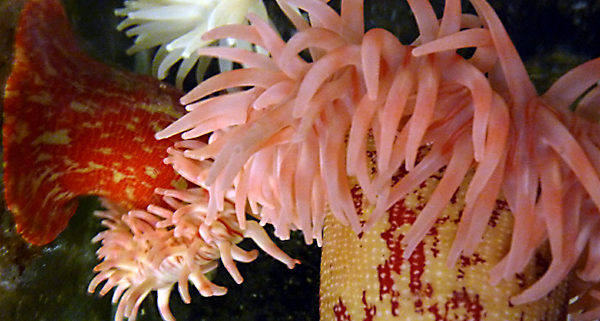Painted Anemone
Common Name: Painted Anemone
Scientific Name: Urticina grebelnyi
Identifying Features
Urticina grebelnyi can be identified by the pink to white color’s on it’s tentacles, as well as raised bumps, referred to as non-adhesive vesicles, on it’s pedal column. Unlike the similar looking species Urticina crassicornis, that U.grebelnyi is often mistaken for, the column of U. crassicornis is smooth while that of U. gregelnyi has the raised bumps. They vary in color and often have green to light yellow patches covered in red blood-like markings. They have many tentacles that are banded red.
Habitat
The Painted Anemone lives on the Pacific and north Atlantic coast in shallow and mid-tidal areas and under ledges and crevices. They can be found in small groups as well as large colonies that form carpets on the floor of the ocean.
Prey
Almost all anemones are carnivorous and using their tentacles they paralyze and consume any bypassing prey. U.grebelnyi in particular eats shrimp, krill, mussels, and fish.
Predators
The Painted Anemone’s natural predators are various species of nudibranches, sea stars, and snails. However it’s not completely defenseless. The tentacles that it uses for catching prey can also be used in self-defense, poisoning it’s enemies in time for it to escape using it’s pedal.
Life Cycle
When anemones reach adulthood the males release sperm and the females release eggs into the water. The gametes travel in the current where the sperm fertilize the eggs. The fertilized egg then developes into a zygote, and then into a planula, a free-floating larval form of the anemone. The planula will settle on a rock or other solid surface where it grows into a polyp. The polyp looks much like the adult though it is smaller. With enough nutrition it will then grow into an adult, walking on it’s pedal to avoid predators or move to a preferred location and catching prey with it’s fully developed poison tentacles.
Photos by Michael Adams and David Young


